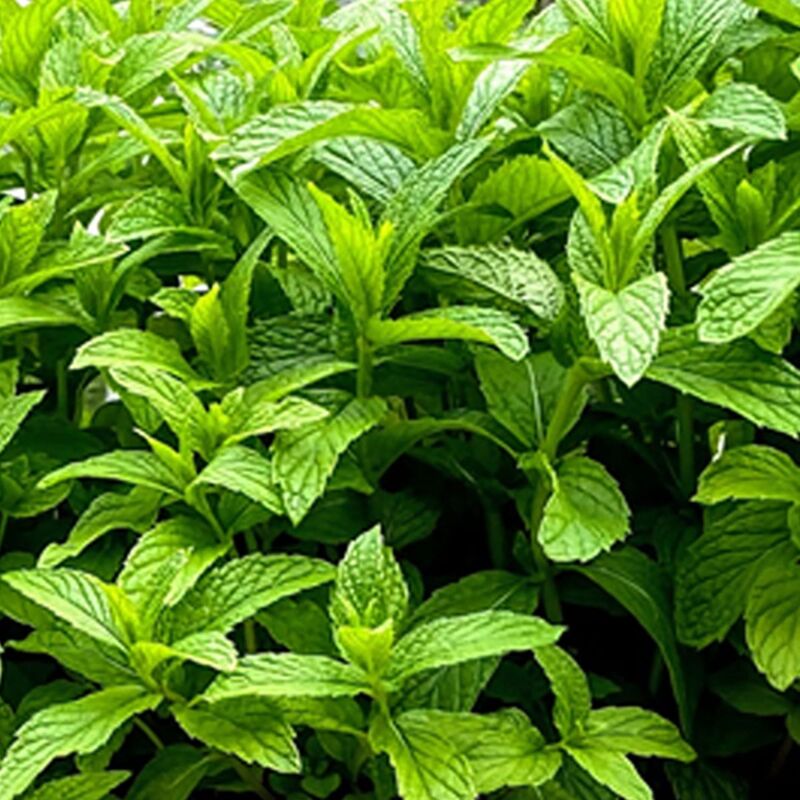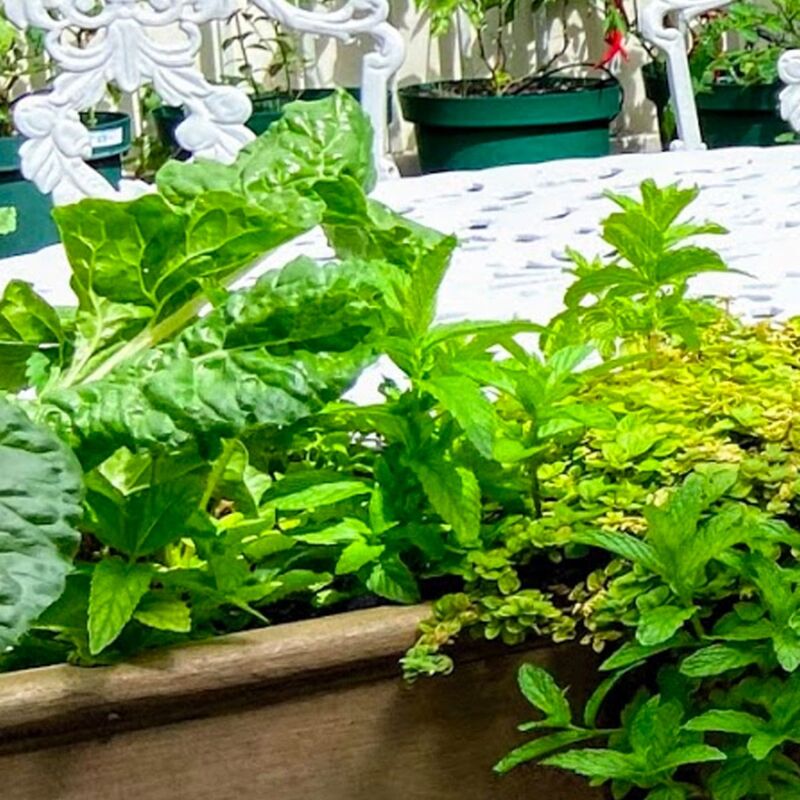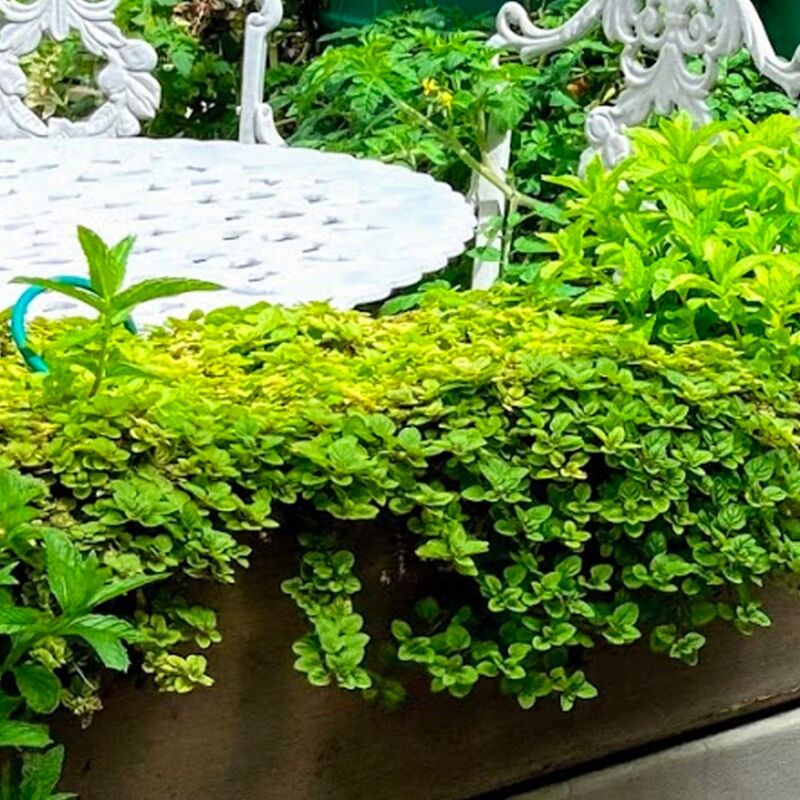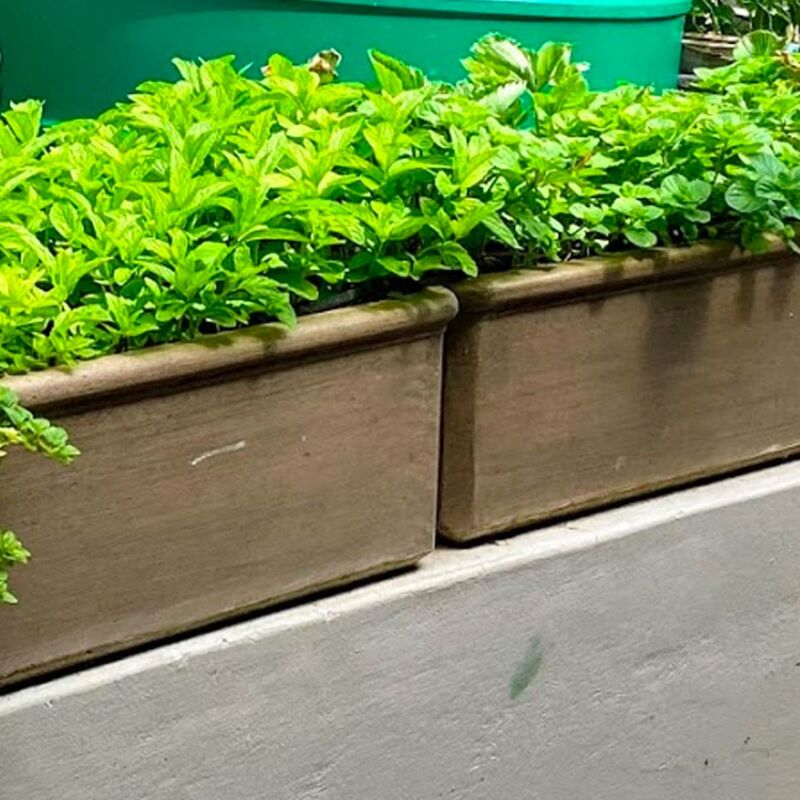Mint

Species: Mentha. Family: Labiatae
The mint family has more than 600 members and has been esteemed over the world for thousands of years. However, it isn't easy to classify because the various species interbreed readily.
It is said that mint has been named after Minthe, a nymph in Greek mythology. Pluto, the god of the underworld, fell in love with her. Proserpine, Plato's wife, became so jealous that she transformed her into this scented herb.
Seeds to seedlings
Mint is a perennial plant and usually does not produce viable seeds; it propagates by root or stemmed cuttings which root easily in water or moist potting soil (in summer), dividing the plant (in fall), or layering anytime during the growing season. I constantly replace old mother roots with new runners and add lots of compost. Old roots should be discarded, and new runners reset in fresh soil.
Growing productive plants
I grow mint in containers; however, the plants always seek new ground and readily invade neighbouring areas by spreading rapidly underground by stems and runners. The plants are always seeking out new ground and constantly send out runners. To restrain the roots and keep the plant manageable, sink a barrier into the soil by placing thick strips of black plastic vertically as barriers in a mint section of a container or only grow mint in the container.
I keep different types of mint apart, as they are very invasive and interbreed readily. More vigorous varieties may also swamp the slower growing varieties.



Water
Mint likes a good amount of moisture in rich, well-drained, alkaline soil, but they will grow anywhere moist. I use soaker lines and water three times a day using my computerized watering system (see the water section).
Light
Mint needs sun daily and should not be grown in complete shade.
Fertilizer
Mint does not like manure. I use my usual soil mixture.
Pruning
The more you cut, the better it grows, but it is essential to replace old roots constantly.
Companion planting and pest management
Mint enhances cabbage, peas, tomatoes and repels ants, aphids, cabbage loopers, flea beetles, imported cabbage worms, squash bugs, and whiteflies.
Harvesting
Leaves can be picked at any time of the year. Harvest young leaves as needed. Or, right before flowering, cut stems to the lowest pair of leaves.
Culinary
Mint sauce is an indispensable condiment for lamb. To make minced mint sauce, finely chop half a cup of mint leaves and add half a cup of sugar, vinegar and warm water, and mix well, garden mint being my favourite variety. Mint is also delicious in sweet sauces, jellies and fruit drinks and an excellent garnish for fruit salads. Mint leaves also make a delicious addition to freshly cooked vegetables, especially potatoes and peas.